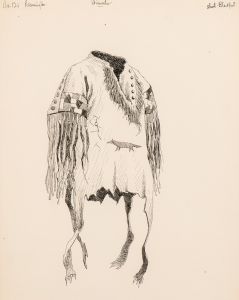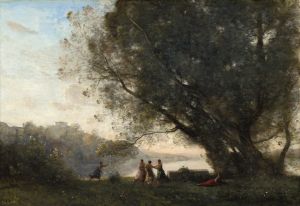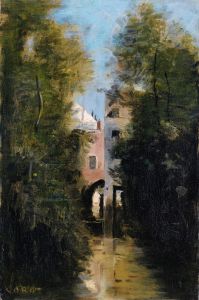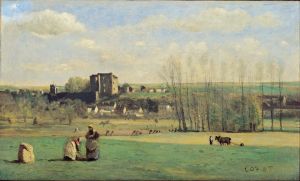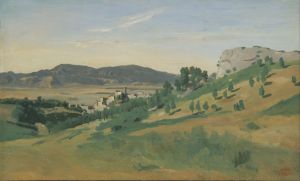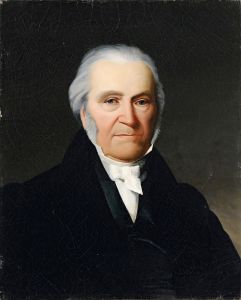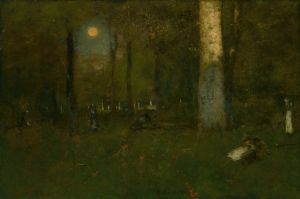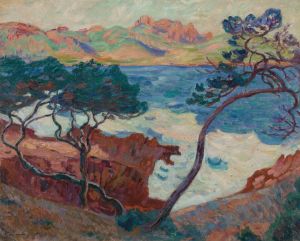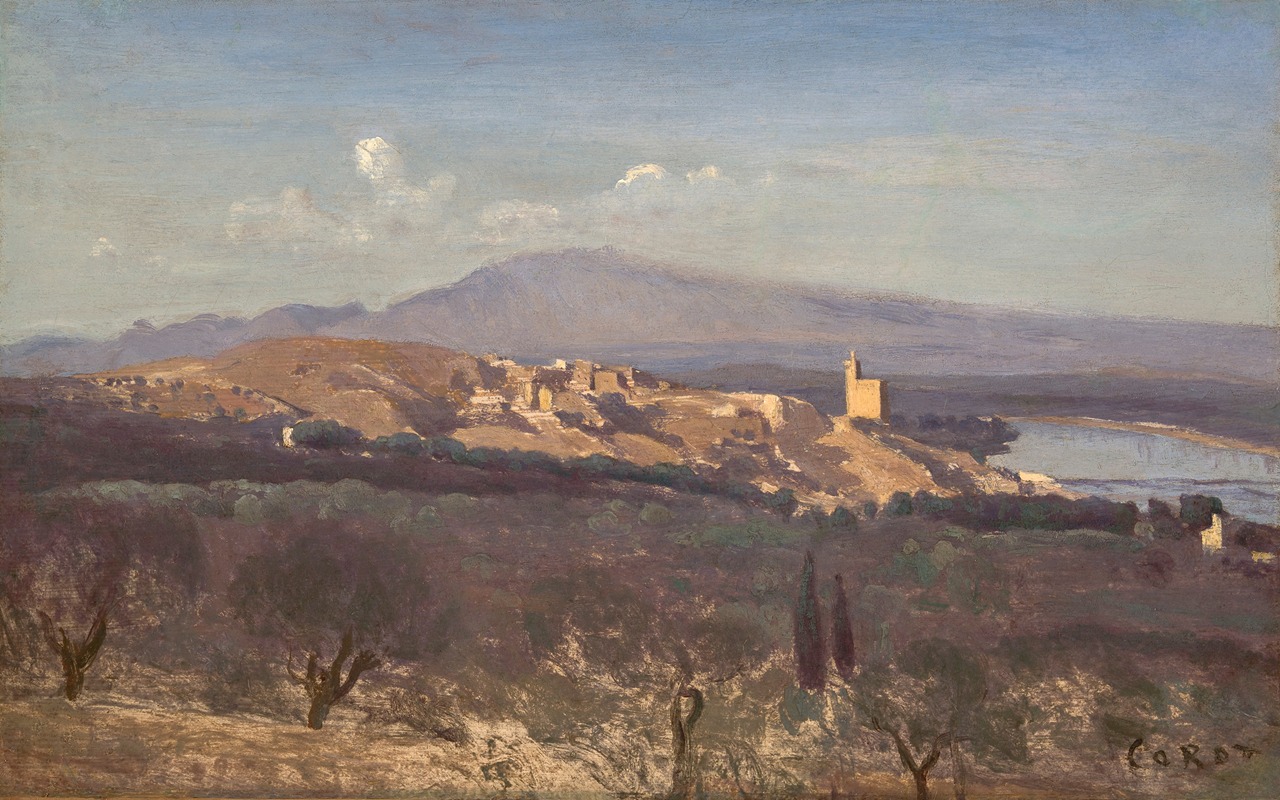
Villeneuve-les-Avignon
A hand-painted replica of Jean-Baptiste-Camille Corot’s masterpiece Villeneuve-les-Avignon, meticulously crafted by professional artists to capture the true essence of the original. Each piece is created with museum-quality canvas and rare mineral pigments, carefully painted by experienced artists with delicate brushstrokes and rich, layered colors to perfectly recreate the texture of the original artwork. Unlike machine-printed reproductions, this hand-painted version brings the painting to life, infused with the artist’s emotions and skill in every stroke. Whether for personal collection or home decoration, it instantly elevates the artistic atmosphere of any space.
Jean-Baptiste-Camille Corot was a pivotal figure in landscape painting, bridging the Neoclassical tradition and the plein-air innovations that would later characterize Impressionism. One of his notable works is "Villeneuve-les-Avignon," a painting that captures the serene beauty of the French countryside. Corot, born in 1796 in Paris, was known for his ability to convey the atmospheric qualities of a scene, and this painting is a testament to his skill in rendering light and mood.
"Villeneuve-les-Avignon" depicts the small town of Villeneuve-lès-Avignon, located in the south of France, near Avignon. This area is known for its picturesque landscapes and historical architecture, which have inspired many artists over the centuries. Corot visited this region during his travels across France, where he sought to capture the essence of the natural and built environment through his art.
The painting is characterized by its soft, muted palette and delicate brushwork, which are hallmarks of Corot's style. He often employed a limited color range to create a harmonious and tranquil atmosphere, focusing on the interplay of light and shadow. In "Villeneuve-les-Avignon," Corot captures the gentle light of the region, possibly during the early morning or late afternoon, when the sun casts long shadows and bathes the landscape in a warm glow.
Corot's approach to composition in this work is both balanced and dynamic. He often used a combination of horizontal and vertical elements to guide the viewer's eye through the scene. In "Villeneuve-les-Avignon," the viewer might notice how the lines of the architecture and the natural landscape work together to create a sense of depth and perspective. This technique allows the viewer to feel as though they are stepping into the scene, experiencing the tranquility and beauty of the location firsthand.
The painting also reflects Corot's interest in capturing the transient effects of light and atmosphere, a pursuit that would later influence the Impressionists. His ability to convey the mood of a scene through subtle shifts in tone and color was groundbreaking at the time and set the stage for future developments in landscape painting.
Corot's work, including "Villeneuve-les-Avignon," was highly regarded during his lifetime and continues to be celebrated today. His paintings are seen as a bridge between the classical traditions of the past and the modern movements that followed. Corot's influence is evident in the works of later artists who sought to capture the fleeting effects of light and atmosphere in their own paintings.
"Villeneuve-les-Avignon" remains an important example of Corot's contribution to the art of landscape painting. It exemplifies his mastery of technique and his ability to evoke emotion through the depiction of natural and architectural beauty. The painting is a testament to Corot's enduring legacy as a pioneer of modern landscape art, and it continues to be appreciated by art enthusiasts and scholars alike for its serene beauty and technical excellence.






